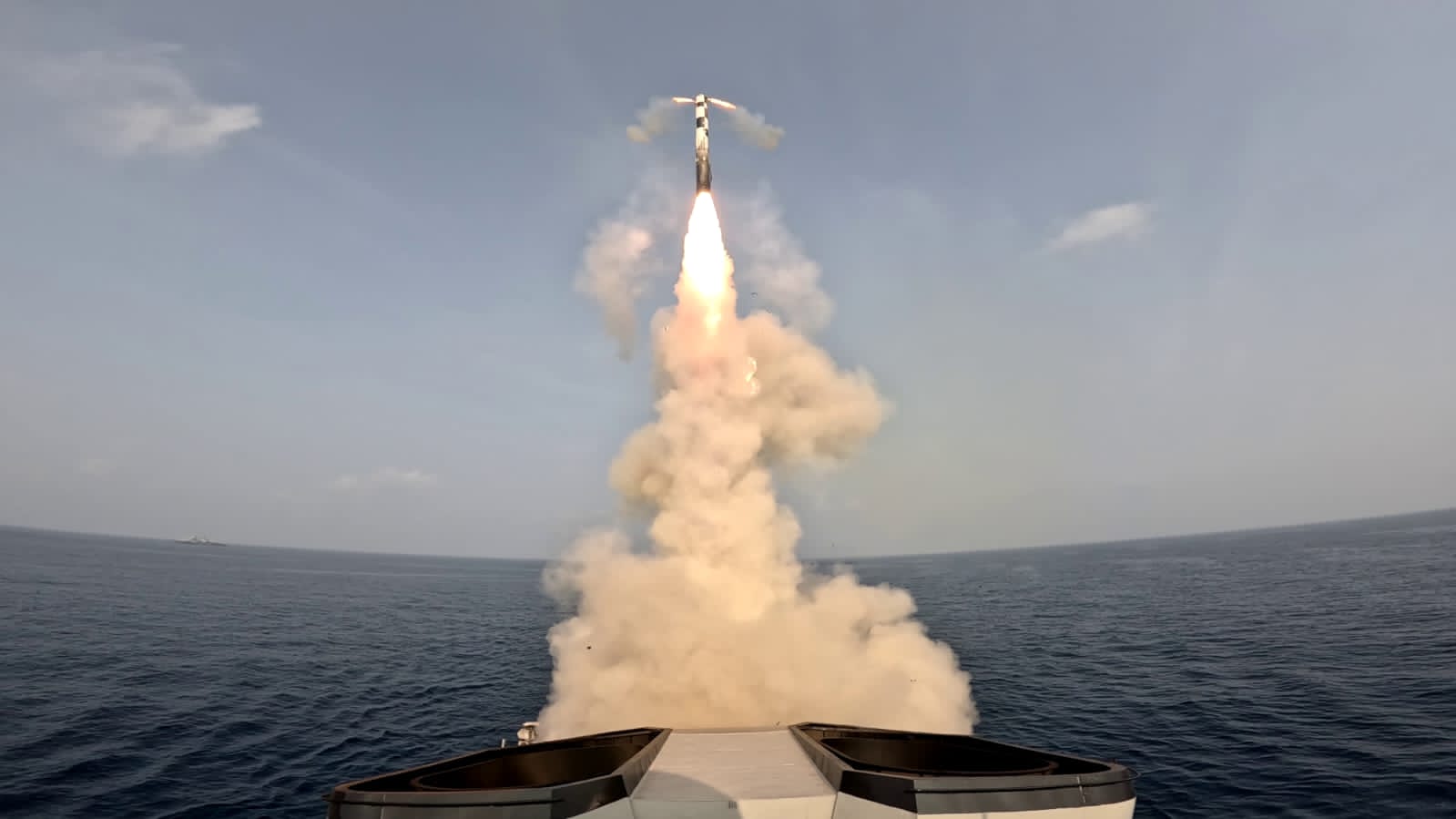Despite the ongoing conflict that has significantly affected the Russian defense industrial sector, the Indo-Russia joint venture ‘BrahMos Aerospace,’ responsible for the production of the BrahMos cruise missile, has demonstrated resilience and is progressing towards new milestones, with ambitious goals for production and indigenization.
In a series of posts on social media site X (previously Twitter) on August 20 and 21, Sputnik News stated that it was informed by a spokesperson of the BrahMos Aerospace Joint Venture (JV) that the missile’s indigenization levels had reached an incredible 70%.
EurAsian Times could not independently verify the spokesperson’s interaction with Sputnik. However, previous reports in Indian media indicated that indigenous content in BrahMos is over 75% now. Indigenization is instrumental in enhancing India’s ‘Make in India’ initiative.
The increase in production of the BrahMos supersonic cruise missile has largely been attributed to the uptick in demand. Earlier, for instance, the Indian Ministry of Defense (MoD) signed a contract with BrahMos Aerospace for the supply of supersonic cruise missiles to the Indian Navy for a whopping $2.5 billion.
The publication implied in its social media posts that the massive purchase meant that the production lines had been working constantly. Additionally, it quoted the BrahMos Aerospace spokesperson as saying that an uptick in demand was a major reason for the increase in missile production. The publication, however, did not mention if the demand was only from India or potential foreign customers.

Nevertheless, the BrahMos missile, which is used by all three services in India and has also recently been exported to the Philippines, continues to attract global attention.
India is reportedly in talks with several foreign countries about exporting the missile. In early August, reports stated that a Brazilian delegation was due to arrive in the country to discuss the BrahMos supersonic cruise missile. Additionally, Malaysia, Indonesia, Cuba, and Vietnam are also considering buying the missile, which is currently the cornerstone of India’s combat capability.
While the BrahMos has become the poster child of India’s defense export, a Russian analog of the missile, the Onyx, has been recognized for its impressive combat performance in the Ukraine War.
No Tactical Nukes, Russia Could Unleash North Korean, Iranian Missiles To Counter Attack On Kursk
BrahMos Analog Has Impressive Combat Performance
Quoting the Sputnik News report, Indian Air Force veteran and military analyst Vijainder K. Thakur (retd) drew attention to Ukrainian statistics released by the General Staff of Ukraine, which state that the Russian Onyx missile, a BrahMos analog, has been very successful in penetrating Ukrainian air defenses during the ongoing war.
“Ukrainian AD kill efficiency against the Onyx has been just 5.7%. Only two missiles have performed better than the Onyx, the Kh-22 (0.55%) and Iskander-M (4.31%),” said Thakur, an avid watcher of the Russian military and the war in Ukraine.
He contends that other Russian missiles have had lesser chances of penetrating the Ukrainian air defenses compared to the Onyx. These include the Kh-35, at 6.67%; the Kinzhal hypersonic aero-ballistic missile, at 25.23%; the Iskander-K short-range ballistic missile, at 37.62%; and the Kalibr cruise missile, at 49.55%.
The P-800 Onyx is a supersonic cruise missile developed by the Reutov NPO Mashinostroeniya (part of the Tactical Missile Arms Corporation). It is designed to combat “surface ship groups, as well as to destroy ground targets in conditions of strong fire and electronic countermeasures”. While primarily developed as an anti-ship weapon, the missile has been used extensively for attacking ground targets.
Last year, on March 23, a month after the beginning of the war, Russia fired a P-800 Onyx from a Bastion battery on a warehouse in Ukraine near the Black Sea port of Odesa. According to Russia’s Ministry of Defense (RuMoD), the building held weapons and ordnance. Another strike was allegedly carried out using the missile in July of the same year, as assessed by the damage.
However, unlike other missiles that Russia uses to attack Ukraine, the Onyx is not fired frequently. As explained in a previous EurAsian Times report, Russia has employed the Onyx at irregular intervals and in varying patterns, surfacing at a time when Ukraine can not anticipate and only partially prepare for these missile and drone attacks.
In July 2023, Yuri Ihnat, spokesman for the Air Force of the Armed Forces of Ukraine, said that the missile posed several technological challenges when deployed against land targets, not the least of which is its speed.
“Onyx missiles are designed to destroy watercraft and ships…they fly at a speed of 3000 km per hour, that is, very fast,” he said on the telethon on the morning of July 20.
The spokesperson further added that the weapon’s flight profile also makes it more difficult to detect and intercept than only its speed. As a “sea-skimming” missile, its final approach to a target occurs at a height of approximately 15 meters or even lower.
“On the march [at launch], it can rise high, and when entering the target, it can actually fly 10-15 meters above the water to destroy the ship,” Ihnat said. “It is difficult to fight with such missiles, but you can influence them in the end through electronic warfare,” he added.
In a previous interview, Ihnat stated that an “anti-ballistic system” was required to counter the Onyx. By this, he most likely meant a system similar to the French SAMP/T missile defense system or the US Patriot. Ukraine does possess a few batteries of both these systems, but not enough to counter every such missile fired by Russia, even if intermittently.

India’s BrahMos missile is a derivative of the Onyx, particularly the latest BrahMos-Extended Range (ER) Land Attack Cruise Missile (LACM), which can reach 450 kilometers from its previous basic range of 290 kilometers. The same missile can also be used for anti-ship roles.
BrahMos is technically a ramjet-powered supersonic cruise missile with a solid propellant booster that can be launched from land-based canisters, submarines, ships, and now aircraft.
It currently flies at speeds between Mach 2.8 and 3.0, but plans are underway to enhance it for speeds exceeding Mach 5.0 in the hypersonic version. It can fly extremely close to the ground to avoid missile defense systems. During the terminal phase, the missile can fly as low as 10 meters to the ground and relies on active radar seeker or inertial guidance in the final phase.
When asked whether India could capitalize on the combat efficacy of Onyx to market the BrahMos to a potential customer, Thakur told EurAsian Times, “Fundamentally, the two missiles are the same. Their ability to fly low at high supersonic speed makes them practically un-interceptible. The Ukraine conflict has demonstrated as much.”
EurAsian Times understands that the Indian military could use Russia’s experience with the missile to enhance its security. India can benefit from understanding how Russia has used the Onyx, especially in a non-contact standoff battle.
When combined with robust surveillance and target-acquisition capabilities, the BrahMos missile can effectively strike the enemy’s rear positions, such as logistical supply hubs and command and control centers—an insight that could prove valuable in the context of ongoing tensions along India’s borders.
- Contact the author at sakshi.tiwari9555 (at) gmail.com
- Follow EurAsian Times on Google News




